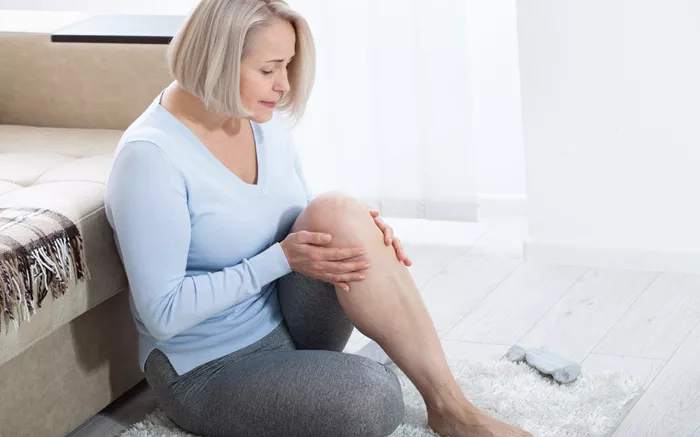Osteoporosis, a condition that causes bones to become weak and fragile, affects millions of people, especially older adults. In fact, at least 1 in 5 women over the age of 50 in the U.S. are affected by osteoporosis, often without realizing it. This is why new guidelines for osteoporosis screening have been issued by the U.S. Preventive Services Task Force, urging women over 65 to undergo bone density scans to detect the disease early and prevent fractures.
Why Screening is Important
Osteoporosis is often called the “silent disease” because it usually has no symptoms until a bone fractures. These fractures typically occur in the hip, wrist, or spine. The condition is most common in postmenopausal women, but men can also be affected.
The updated guidelines recommend that all women aged 65 and older should get a bone density test. For postmenopausal women under 65, the task force suggests that a bone density scan may be necessary if they have certain risk factors. These risk factors include having a family history of broken hips, smoking, drinking excessive alcohol, or having low body weight. A risk assessment questionnaire can help determine if a scan is needed for those who have these risk factors.
The Risks of Osteoporosis
Osteoporosis can lead to severe health problems, such as fractures that cause chronic pain, disability, and even death. Research has shown that between 21% and 30% of people who suffer a hip fracture may die within a year. Despite the importance of early detection, osteoporosis is often overlooked. A national survey in 2023 revealed that many doctors do not prioritize bone density screening, and fewer than 25% of women aged 65 or older were screened for osteoporosis, even though they had not been diagnosed with the disease. The situation is even worse for men, with only 5% of men on Medicare receiving a bone density test after suffering a new fracture.
Screening for Osteoporosis
Osteoporosis screening involves using bone density scans or X-rays to identify individuals at risk for fractures. These scans measure bone mineral density, helping doctors determine whether bones are weak and more likely to break. Unfortunately, many people remain unaware of the need for a bone density test, especially if they do not exhibit obvious symptoms. Some early signs of osteoporosis include a stooped posture, loss of height, or discomfort in the bones, but these symptoms can also be related to other conditions, like arthritis.
Dr. Thomas Weber, an expert in osteoporosis and metabolic bone disorders at Duke University, points out that doctors often underestimate the serious consequences of bone fractures, including pain and disability. As a result, osteoporosis screening is often given low priority in medical practices.
Osteoporosis and Weight Loss Medications
A growing concern among health experts is the potential impact of weight loss medications on bone health. Prescription drugs like semaglutide (found in Ozempic and Wegovy) and tirzepatide (found in Zepbound) are gaining popularity for weight loss. However, recent studies suggest that these medications can lead to a decrease in bone density, especially if users are not engaging in exercise. For those at risk of osteoporosis, particularly women over 65, it’s recommended to have a bone density test before starting weight loss treatments. The combination of exercise and weight loss medications has been shown to help protect bone mass, but relying solely on medication without exercise may harm bone health.
Preventing and Treating Osteoporosis
Although osteoporosis is not curable, it is preventable and treatable. Early detection through screening is key to preventing serious fractures. There are several treatments available that can help stabilize or even improve bone density. These treatments can reduce the risk of fractures by up to 50%, depending on the medication used.
Dr. Felicia Cosman, an osteoporosis expert, recommends certain lifestyle changes to help prevent osteoporosis. A balanced diet with plenty of fruits and vegetables, avoiding excessive smoking and alcohol, and maintaining an active lifestyle can all reduce the risk of bone disease. Strength training exercises, weight-bearing activities, and balance training can help keep bones strong and reduce the risk of falls. However, people with certain types of bone disease, such as spinal fractures, should avoid exercises that involve twisting or bending the spine.
In addition to lifestyle changes, ensuring adequate intake of calcium and vitamin D is essential for healthy bones. Calcium-rich foods like milk, yogurt, and cheese are excellent sources of calcium. If dietary intake is insufficient, calcium supplements may be needed. Vitamin D helps the body absorb calcium, and while it can be obtained from sunlight, many people require a supplement, especially those over 50. Experts recommend a daily dose of 800-1000 international units of vitamin D for people aged 50 and older.
It’s important to talk to your doctor about whether vitamin D supplements are right for you, as individual needs vary. Research has shown that vitamin D supplements do not prevent fractures in healthy individuals aged 50 and older, but they can still play a role in maintaining bone health.
Conclusion
Osteoporosis is a serious condition that can cause debilitating fractures and loss of independence. Early detection through bone density screening is essential to prevent the disease from progressing to the point where fractures occur. Women aged 65 and older should get a bone density test, and younger women with risk factors should consider screening as well. Preventative measures such as a healthy diet, regular exercise, and proper supplementation can help protect bone health and reduce the risk of fractures. Talk to your healthcare provider about osteoporosis screening and prevention to keep your bones strong and healthy.
Read more:
- Understanding Osteoporosis In Women: Treatment & Prevention
- What Is The Ideal Weight Range For 25s Woman?
- What is the ideal weight range for 30s woman?


